The low-tire pressure light — that pesky orange light on your dashboard always seems to come on at the worst times — when you are running late for work, stuck in traffic, or on a deserted road.
I should know. About 2 months ago, I suffered a low tire-pressure induced blowout in the middle of the Howard Frankland Bridge in bumper to bumper traffic.
And it was pouring rain.
And blowing wind.
Oh, and there was some lightning too.
It was not ideal.
When you see the low-tire pressure light pop up you might feel concerned but usually not concerned enough to stop as soon as you can for air. Hell, you might choose to ignore that light for a few days or even weeks (er, possibly even longer if you are a true procrastinator)! I mean, you don’t have a flat tire (yet, you hope!) so it’s not a big deal driving with your low-tire pressure light is on, right?
Wrong! It might seem like a royal pain to stop and take care of your low-tire pressure but really — do the right thing and just get ‘er done.
The longer you leave your low tire pressure, the more you set yourself up for a litany of problems including lower gas mileage all the way to a potentially catastrophic blowout!
Why is it important to check tire pressure?Checking your tire pressure and keeping your tires properly inflated is a chore, but it is much easier than dealing with the consequences of under-inflated tires. Low tire pressure can negatively affect handling, tire wear, fuel economy, and most importantly, safety.
Low tire pressure can also cause a car to be less responsive and have less traction, making it more difficult to avoid emergency situations (think switching lanes last minute in traffic or dodging a pothole). Less traction also means that your car’s engine will have to work harder and use more gas than it needs to. According to the EPA, properly inflated tires can increase fuel efficiency by three percent or more. That is money in your pocket!
Your fuel economy suffers when you under inflate your tires.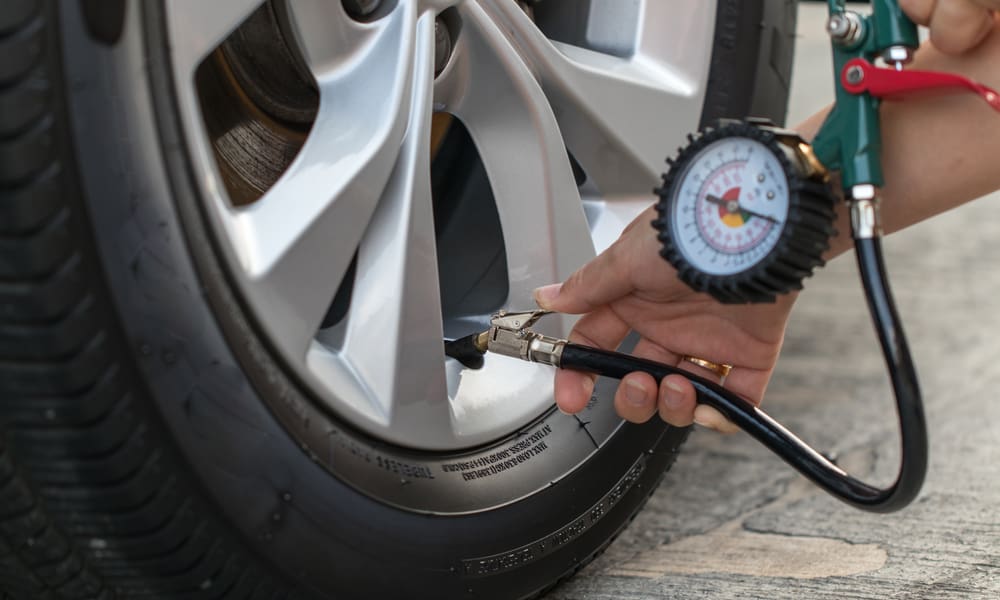 Under inflated tires can lower your gas mileage by about 0.2% for every 1 PSI drop in average pressure.
Under inflated tires can lower your gas mileage by about 0.2% for every 1 PSI drop in average pressure.
While that might not seem like a lot at first, let’s assume your tires are under inflated by about 12 psi, which is very common. Assuming you drive the nationwide average of 13,476 miles a year, your under inflated tires are wasting roughly a full tank of gas each year.
But that isn’t all.
Under-inflation causes tires to distort, leading to increased wear, especially on the sidewalls of the tires, putting your tires at an increased risk of having a blow out — something no one wants to experience.
Tire blowouts kill about 500 drivers a year, and cause well over 2,000 accidents in the United States alone.
Even worse, most tire blowouts are caused by negligent inflation of your tires. Tire pressure management systems have been mandatory since 2007, so if you’re driving a newer car, your car will tell you when it’s time to inflate.
However, if you’re driving an older car, it’s extremely important to check your tire pressure at least once a month.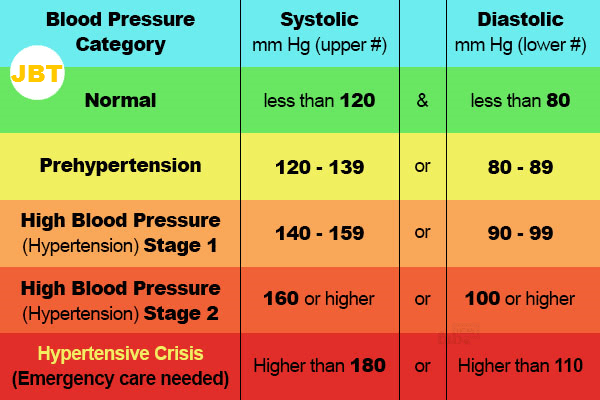
It is important to know that tire pressure can be lost without a tire appearing under inflated or flat. So just because a tire looks ok, doesn’t always mean it is.
What is the lowest tire pressure you can have and still drive?We’ve already established why it doesn’t make sense to drive with low-tire pressure. However, if you’re wondering how “low you can go” and still drive your care, listen up.
If you have standard passenger tires (ninety percent of vehicles do) the lowest tire pressure you can generally drive with is 20 pounds per square inch (PSI). Anything under 20 PSI is considered a flat tire, and puts you at risk for a potentially devastating blowout.
How low does tire pressure have to be for the low tire pressure light to come on?In 2008, a federal law was put into place requiring automakers to provide tire-pressure monitoring systems (TPMS) as standard vehicle equipment. The low tire-pressure warning light will display when the tire’s air pressure is 25 percent below the automaker’s recommended PSI. A 25 percent reduction in tire pressure is considered severe. So take the low-tire pressure warning as the warning it is!
A 25 percent reduction in tire pressure is considered severe. So take the low-tire pressure warning as the warning it is!
Why are your tires low on air? Obviously, tire damage will cause tire pressure to become low but it is not the only reason for tire pressure to drop. Tires can lose pressure over time and can be affected by cold temperatures.
According to Car and Driver, tires normally lose about a pound of pressure for every 10-degree drop in temperature. It is important to check tire pressure as the seasons change to account for changes in temperature and the resultant decrease in tire pressure.
You also have to account for your tires progressively losing air. On average, your tire looses about 1 PSI per month. With most passenger tires being inflated to around 35 PSI, it doesn’t take that long for you to get into hot water.
Which makes it extra important to know when your tire pressure is low, which requires you to know the recommended pressure in the first place.
As a driver, you should be familiar with auto manufacturer’s tire pressure recommendations. You can find this information in your vehicle’s owner’s manual. It can also be found on the drivers-side door jamb.
How do tire-pressure monitoring systems work?Have you ever wondered how the whole low-tire pressure alert works? It’s pretty simple but interesting at the same time.
Tire-pressure monitoring systems use a sensor which is located in the pressurized pocket between the wheel and the tire. The sensor constantly measures the air pressure within the tire and transmits that information to the vehicle’s onboard computer. If tire pressure is low, the driver will be alerted by a low tire-pressure warning in the instrument display. Just want you (don’t!) want to see!
Can low tire pressure be caused by cold weather?Yes! Those miserably cold days can definitely cause tire pressure to decrease! Tires generally lose about a pound of pressure for every 10-degree drop in temperature. You should check tire pressure when the temperatures dip down, especially if you live in a colder climate.
You should check tire pressure when the temperatures dip down, especially if you live in a colder climate.
Just another reason that I love living in Florida.
How do you check tire pressure?So the decision has been made to buck up and check your car’s tire pressure. Nice job.
It is a good idea to have a tire-pressure gauge in your vehicle. Although some gas station air pumps have gauges, they’re not always accurate or easy to reach. It’s much better to have your own tire gauge so that you can keep an eye on tire pressure at home or on the road. You can easily buy an inexpensive, hand-held tire pressure gauge at any auto parts store or major department stores, like Target or Walmart.
Although these have been around for what feels like forever, newer digital gauges can be much more accurate. If you have it in your budget, spend the extra $5 and get a digital.
The best time to check tire pressure is first thing in the morning when the tires are “cold” or at least three hours after driving.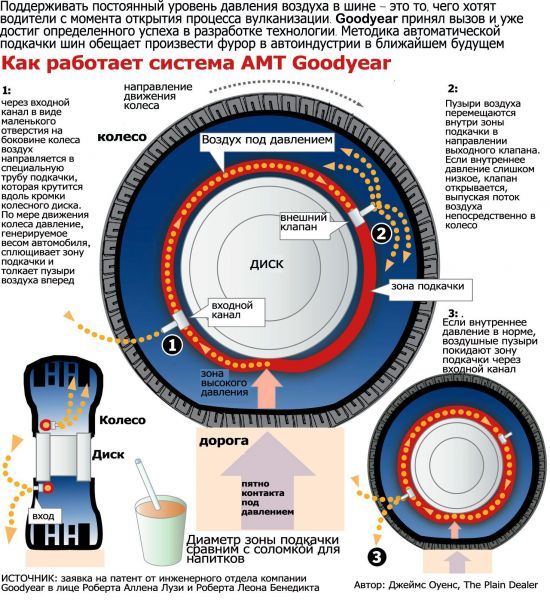 Take off the valve cap and press the tire-pressure gauge firmly into the valve stem until the device produces a pounds-per-square-inch (PSI) reading. If you hear a hissing sound you’re releasing air from the tire and will need to push the gauge more firmly in the valve stem to get a reading.
Take off the valve cap and press the tire-pressure gauge firmly into the valve stem until the device produces a pounds-per-square-inch (PSI) reading. If you hear a hissing sound you’re releasing air from the tire and will need to push the gauge more firmly in the valve stem to get a reading.
Pressure readings are more likely to be higher (usually between 2 and 6 PSI higher) if the car has been recently driven and the tires are hot. If you do end up checking your tire pressure after driving, you should add a little extra air pressure to account for the artificially high tire pressure reading
How can I fix tire pressure?If you find your tire pressure is low you will need to add air to the tire. Many gas stations have air pumps that you can use to top off your tires. Some machines take coins only but most will also accept a credit card for payment. It usually costs a dollar or two to use an air pump — this should give you more than enough time to add whatever air you need to your tires.
To fix tire pressure:
Tire pressure should be checked monthly. Yes, it is another item on your to-do list but the few minutes it takes to check your pressure will extend the life of your tires, increase your gas mileage, improve your vehicle’s performance, and protect your safety and the safety of other drivers!
Yes, it is another item on your to-do list but the few minutes it takes to check your pressure will extend the life of your tires, increase your gas mileage, improve your vehicle’s performance, and protect your safety and the safety of other drivers!
It’s worth doing.
You know what else is worth doing?
Getting 24/7 roadside assistance in case you ever suffer a blowout on the side of the road so you’ll never have to worry about being stranded. One call is all it takes.
You can get a tow, or a new tire and be back on the road as good as new with no hassle on your part.
This is one of the many perks you’ll get with an extended warranty policy from Protect My Car that can potentially save you thousands on expensive repairs like engine or transmission failure.
Most of our plans start at less than $2 a day. To see how affordable it can be to protect your car and get 24/7 roadside assistance to protect your car from breakdowns, visit pmcquote.com to get a free, instant quote with no phone call needed.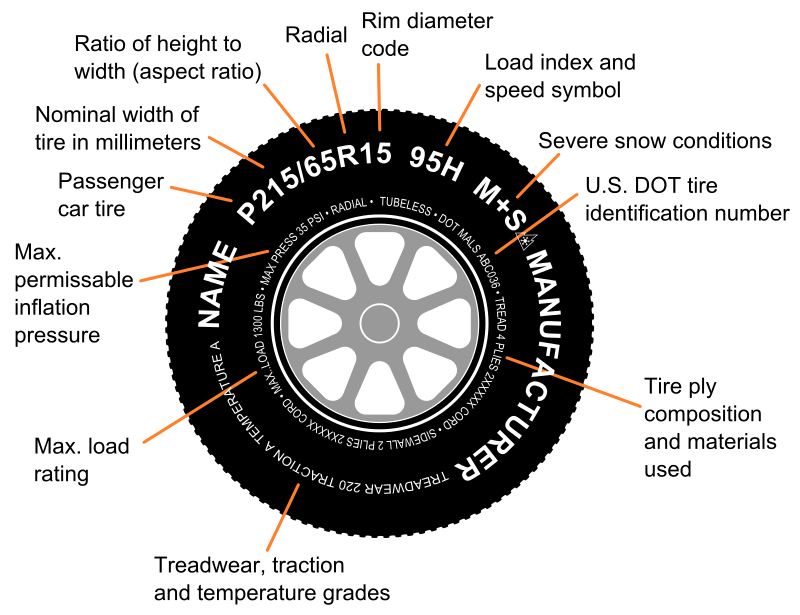
Spread the love
Are your car tires squealing when you are taking a turn? One of the probable reasons is that your tire pressure is too low. The tire’s pressure is important for the long life and the safety of the car and passengers.
via GIPHY
A tire with ideal pressure will result in better fuel economy, which will result in less pollution. In this article, you can read more about what tire pressure is, how it is monitored, what tire pressure is too low to drive on and how low tire pressure can cause trouble- both to the car and your finances.
Contents
The Tire Pressure Monitoring System or TPMS is responsible for monitoring the air pressure inside your car’s tires. All vehicles manufactured since 2007 must have this system in the United States.
There are two sub-systems to the TPMS:
Direct TPMS: Measures the tire pressure using the sensor located in the tire assembly. The value from the sensor is transmitted to the car’s computer system. It will let the driver know if the tire pressure is below the recommended level or less than 25%.
The value from the sensor is transmitted to the car’s computer system. It will let the driver know if the tire pressure is below the recommended level or less than 25%.
Indirect TPMS: With the help of the ABS, the Indirect TPMS measures the diameter differences of each tire. It also measures the rate of revolution of each wheel using the wheel speed sensors.
After reading the value returned by the TPMS system, the control system will turn on the “low tire pressure light” to let you know about the current situation.
The ideal tire pressure set by vehicle manufacturers will depend on an array of factors. These include how much load the vehicle can carry, the size and weight of the vehicle, the tread contact patch shape, and other handling parameters. Since each and every vehicle is unique in terms of the above factors. In some cars, the ideal value will be different for front and rear wheels.
via GIPHY
For most cars, the recommended value is around 32 to 35 psi when they are cold. You can get an accurate reading when the car is left alone overnight or is parked for a few hours.
You can get an accurate reading when the car is left alone overnight or is parked for a few hours.
So the conclusion is that the lowest value for your car will depend on the vehicle’s weight and size. However, for your convenience, the manufacturer has already set the ideal value, and it would be if you maintain that value. This will improve the traction; the vehicle will have better fuel efficiency, enhance safety, and reduce the wear and tear of the tires.
The distance you can travel on a low tire pressure depends on how low the value is from the ideal pressure specified by the vehicle manufacturer. If the tire pressure is too low, there is a high chance that the tire will fail. It will lose shape and most likely leave you stranded with a flat tire.
On the other hand, if the pressure is slightly lower than the standard value, you can drive for a couple more miles. But during this period, the fuel consumption will be high, and the tire will start to wear out. So it is better to refill the tires as soon as possible before continuing your journey.
So it is better to refill the tires as soon as possible before continuing your journey.
If the tires do not appear deflated to the naked eye or soft to touch, they might not be too dangerous to drive on. But to be on the safe side, it is best to get to the nearest gas station and fill the tire. Also, it is advised not to go on long drives while your tire pressure is low.
via GIPHY
Many people wonder why the TPMS light is on, but their tires are fine. This does happen more often than not. People have become more careful about tire pressure ever since TPMS monitoring came to use in the US. If the light is on, do a visual inspection of the tires. Also, a few factors like temperature play a major role in that.
As you already saw above, the effects of driving with low tire pressure can cause damage to the car and the passenger. Low pressure on soft ground surfaces may be good, but it can be dangerous if you consider normal roads.
Similarly, low value can become a villain if you are driving when it’s raining or the road is covered in snow. Low pressure on such surfaces can result in low grip while taking a turn or even braking. As a result, the car will start drifting while taking corners, and even the most seasoned driver will not want to be in the driving seat at that point.
Low tire pressure from cold weather is common as the air inside the tire becomes cold. The cold air molecules will shrink, or in other words, cold air is denser. That is why the value decreases during winter. Since this is a time when you might take a vacation or long drives, having ideal tire pressure is very important.
Theoretically, your tires could lose around 1 to 2 PSI every time the temperature drops by 10°F. So you will have to inflate the tires at least once during the winter season.
If the low air pressure light is on, first, you want to check the pressure yourself.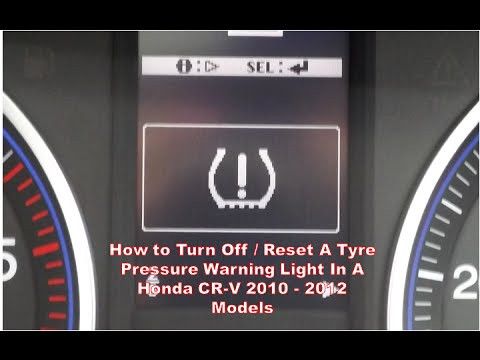 In some rare cases, the sensors may not be working properly. For instance, the spare tires do not have a TPMS sensor, and if you are using the low tire pressure symbol will be displayed.
In some rare cases, the sensors may not be working properly. For instance, the spare tires do not have a TPMS sensor, and if you are using the low tire pressure symbol will be displayed.
via GIPHY
Find the recommended tire pressure specified by the vehicle manufacturer. You can find this from either the driver’s side door card or the vehicle owner’s manual. You can then measure the value on each wheel using an air pressure gauge.
First, unscrew the valve stem cap and insert the gauge to measure the air pressure. The gauge should be fitted tightly to the valve stem to get an accurate reading if the value you obtain from all the tires is the same as the recommended manufacturer-specified value. If it is low, visit the nearest gas station or mechanic and inflate your tires.
Here’s more info on top-rated airport parking, the best parking spots in your city, affordable auto insurance, easy auto refinance, and high-quality car washes near you.
Photo: Shutterstock
adv.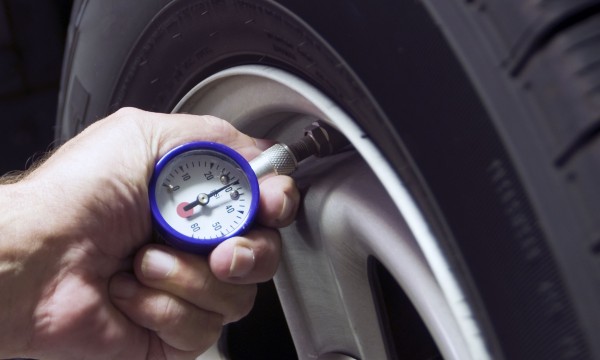 rbc.ru
rbc.ru
See also
Tires are the only vehicle element that is in constant contact with the road. One of the main indicators of their serviceability is pressure. It affects not only fuel efficiency, but also safety.
As a rule, car manufacturers recommend maintaining tire pressures between 2.0 and 2.8 bar. But in practice there are situations when it is necessary to deviate from this norm.
adv.rbc.ru
Tire pressure should be checked at least once a month, there are several ways to do this. We understand why it is so important to observe the optimal pressure indicator and what it affects.
In this story:
Tire pressure is the resistance with which air "presses" on the inner area of the rubber. Properly inflated tires will last longer, give you better ride quality and improve your driving safety. If the pressure in the tires is too low or they are pumped over, then the car owner runs the risk of facing a number of problems: from buying new tires to the threat of an accident.
Properly inflated tires will last longer, give you better ride quality and improve your driving safety. If the pressure in the tires is too low or they are pumped over, then the car owner runs the risk of facing a number of problems: from buying new tires to the threat of an accident.
Properly inflated tires will last longer (Photo: Global Look Press)
Under-inflated tires are tires that are below the recommended pressure. In this case, the contact patch of rubber with the road increases, which leads to increased friction or rolling resistance. A worn out outer edge of the tread can visually give out such a problem.
Increased friction with the road can cause the tire to overheat, slip and even burst. In addition, low tire pressure leads to:

When tires are over-inflated, that is, above the manufacturer's recommended rate, the contact patch decreases. As a result, the main friction with the road is taken over by the central part of the tire.
Excessive tire pressure leads to excessive sensitivity to road irregularities and the risk of tire damage, even destruction. Overinflated tires also cause the following:
Tatyana Eliseeva, an auto expert, master of sports of international class in motorsport, comments
For flat tires:

For overinflated tires:
Excessive tire pressure leads to excessive sensitivity to road irregularities and the risk of tire damage (Photo: Shutterstock)
For each car model, the manufacturer sets its own optimal tire pressure. This indicator depends on the mass of the car, the speed of operation, the number of passengers (partial or full boarding), as well as the load on the trunk [1].
The recommended tire pressure can be found in the vehicle owner's manual or on one of the plates/stickers in the passenger compartment. They can be:

Tire pressure is measured in several units. In Russia, they usually indicate in kg / cm 2 (or atmospheres) and bars (bar). These two indicators are almost equal, which is why they are often used as synonyms:
Foreign models often use pounds per square inch (pound per square inch), or psi:
For convenience, car manufacturers can indicate pressure in two units at once - bar and psi. Thus, the need to independently calculate according to the formulas disappears. Otherwise, you can do this in one of the online calculators or check the table of popular values.
| 2.0 bar | 2.1 bar | 2.2 bar | 2. 3 bar 3 bar | 2.4 bar | 2.5 bar | 2.6 bar | 2.7 bar | 2.8 bar |
| 29psi | 30psi | 32 psi | 33 psi | 35 psi | 36 psi | 38 psi | 39 psi | 41 psi |
Temperature has a significant effect on tire pressure: when it drops, the pressure in the wheels decreases with it. When the temperature drops by 10 °C, the tire deflates by an average of 0.07–0.14 bar or 1 to 2 psi [2].
Temperature has a significant effect on tire pressure (Photo: Shutterstock)
Summer tires typically use manufacturer's recommended readings. But in winter, it is advised to add about 0.2 bar to these figures [3].
Experts also recommend checking and correcting tire pressure at outside temperature. In the cold season, swapping is best done not in a warm garage, but on the street. In the summer, before such a manipulation, you should make sure that some of the wheels of the car were not under the scorching sun, while others were in the shade.
Sometimes the tire pressure needs to be adjusted according to the situation. For example, when the machine is fully loaded or a trailer is towed. For such cases, automakers, as a rule, separately indicate the optimal pressure.
But there are moments that fall into the category of extreme and non-standard (especially if before that the car most often drove around the city). Automotive expert Tatyana Eliseeva analyzed the most common of them.
Leads to heating of the wheels, especially in summer, and therefore it is necessary to follow the manufacturer's recommendations before such a trip.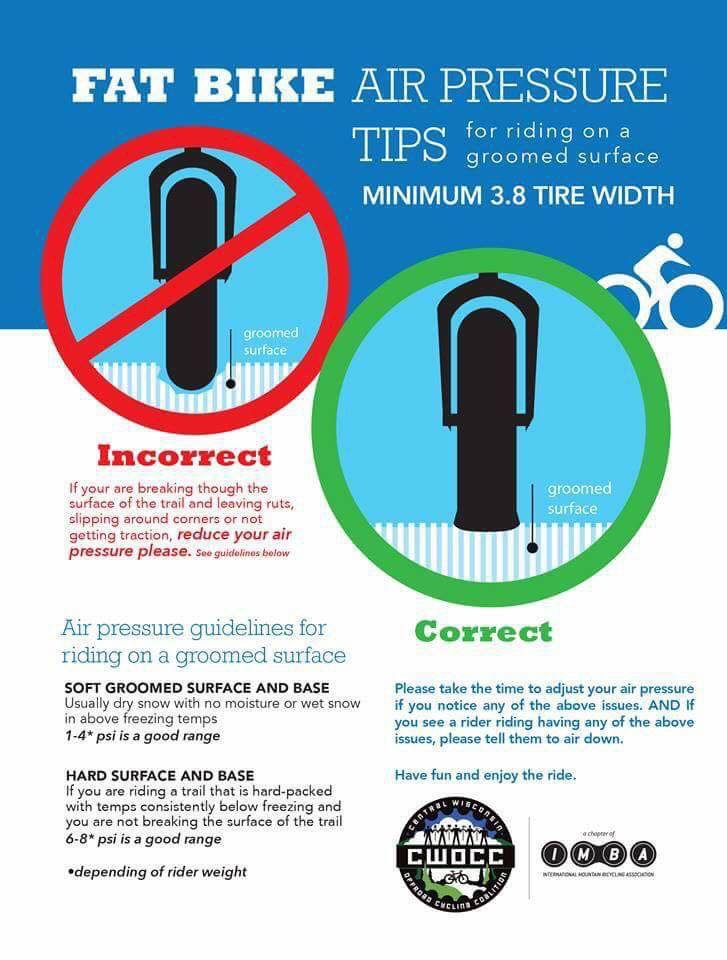 We do not know what we will meet: patched road repairs or heavy rain. After all, for each of these situations, the recommendations will be opposite. Athletes can play with pressure when track conditions are known and engineers can always change the settings. For a long journey, the layman just needs to choose the average.
We do not know what we will meet: patched road repairs or heavy rain. After all, for each of these situations, the recommendations will be opposite. Athletes can play with pressure when track conditions are known and engineers can always change the settings. For a long journey, the layman just needs to choose the average.
Tires must be bled off, especially on sand. The question is for how much? You can bleed up to 0.7 atm, but a not very experienced motorist can slip the wheels with an inaccurate movement, and if the driver turns the steering wheel sharply (for example, trying to catch on the edge of the track), then the tire can come off the disk. And such cases occur regularly.
At near-zero temperatures on packed snow, ice or sludge for new wheels (velcro or studded) it is better to pump the wheels a little so that water and sludge are squeezed out of the central zone of the contact patch and the tread is better worked. The wheel must be cleared for the tread to work. When it is clogged with snow, the braking distance and traction deteriorate greatly.
The wheel must be cleared for the tread to work. When it is clogged with snow, the braking distance and traction deteriorate greatly.
If the car has worn wheels, but with an acceptable tread depth for winter tires (4 mm), then you should not hope for the correct operation of the tread. Such a low checker no longer pushes the snow. In this case, it is necessary to reduce the pressure in the wheel, thereby increasing the same contact patch.
Photo: Global Look Press
On a country road, the weight of the machine will be an important factor. In this case, we select the pressure according to the load - specific indicators must be viewed on the central pillar of the body. There you will see something like the following recommendation: the more the car is loaded, the higher the pressure in the rear wheels should be.
But a badly broken road can lead to herniations, ruptures and tire damage. Therefore, if we increase the pressure, then we drive on a bad road as calmly and measuredly as possible. Or we slightly deviate from the manufacturer's recommendations and raise the pressure not as much as the manufacturer recommends.
Or we slightly deviate from the manufacturer's recommendations and raise the pressure not as much as the manufacturer recommends.
The main factor in changing the behavior of the wheel is not the pressure drop at altitude, but the presence of a large number of sharp turns and long braking. The tire will heat up not only from the loads, but also from the operation of the brake mechanisms. Therefore, the idea that due to low pressure it is necessary to increase the pressure in the tires is wrong, because the temperature of the wheel has a much greater influence in this case.
The recommended pressure is always given when the tires are cold. This means that the vehicle has not been driven for three hours or has traveled less than 1 mile (or one mile).
There are two ways to check tire pressure: on your own or at a workshop. In the first case, it is enough to use a public pump at a gas station or purchase a pressure gauge.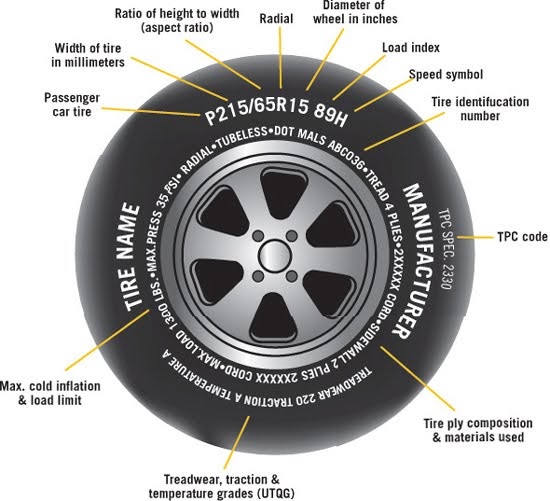 This tire pressure measuring device comes in three types:
This tire pressure measuring device comes in three types:
Another option is to install special pressure control caps on each nipple. Such a gadget works as follows: the upper part of the cap is transparent and, depending on the level of pressure, an indicator of three colors appears in it. Green - the pressure is normal, yellow - the tire is flat, red - the pressure has exceeded the norm.
Photo: Shutterstock
The easiest way to monitor tire pressure is with the automatic TPMS (Tire Pressure Monitor System). Today it is installed on almost all models, and in some countries its presence is a prerequisite for releasing a car from the assembly line.
In these systems, the electronics automatically detect changes in the tire, and if the pressure drops below the recommended value, a warning signal lights up on the on-board computer screen.
There are two types of TPMS:
Car manufacturers recommend checking tire pressure every two weeks, but at least once a month. Indeed, even under ideal conditions (for example, the car is idle for a long time), the wheels lose approximately 0.069bar, or 1 psi, per month [4].
The pressure should be monitored before and after a long trip, during a sudden change in temperature (for example, during the first frost or warming), and also after changing tires or driving with a load.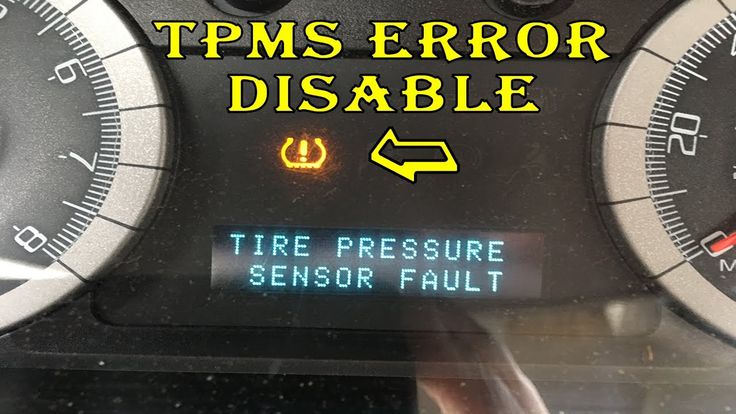
Also, don't forget the spare wheel. Automakers advise servicing it at least as often as the main wheels. As a rule, it has its own optimum pressure values, which can be found in the operating brochure or information table.
| Make and model | Standard load front pressure | Rear pressure at standard load |
| Lada Granta (standard version) | 2.0 bar | 2.0 bar |
| Lada Vesta | 2.2 bar | 2.2. bar |
| Kia Rio | 2.3 bar | 2.3 bar |
| Hyundai Creta | 2.3 bar | 2.3 bar |
| Renault Duster | 2.0 bar | 2.0 bar |
If you study the requirements for a car wheel, you can distinguish only two groups: those that you have to pay attention to only once (when buying) and those that need to be monitored constantly. Among the latter, there is such a criterion as tire pressure.
Among the latter, there is such a criterion as tire pressure.
At the initial stage, the tire acquires the necessary rigidity due to the correct proportions of the components in the rubber. But you can start using it only by pumping in the necessary amount of air, which creates internal resistance. The force with which it acts on the tire is the pressure in it.
Service technician measures tire pressure
The most common units of measurement are bar (Russia) and PSI (Europe and USA). In the first case, pressure is measured in atmospheres or kilograms per cm². And the second uses the ratio of pounds per square inch. Converting PSI to bars is easy: just divide the value by 14.5 (or do the opposite if you need to convert bars to PSI).
A number of important characteristics depend on whether the wheels are properly inflated.
Handling .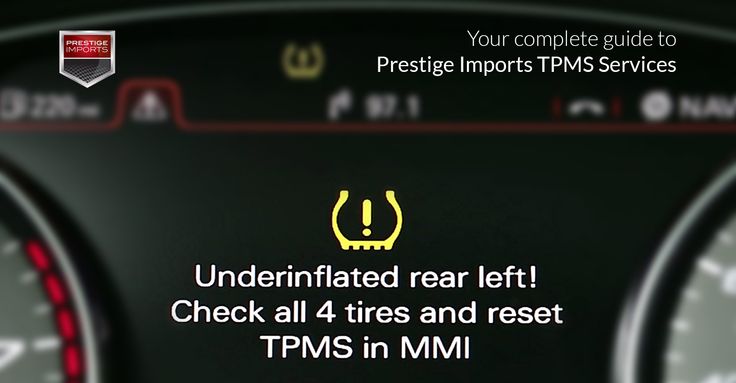 The easiest way to understand that the tire pressure is incorrect is to follow the behavior of the car. Harder than normal travel, when every bump and pit is felt, and low brake sensitivity indicate that the wheels are overinflated. A decrease in reaction to gas and steering turns signal a lack of air in the cylinders.
The easiest way to understand that the tire pressure is incorrect is to follow the behavior of the car. Harder than normal travel, when every bump and pit is felt, and low brake sensitivity indicate that the wheels are overinflated. A decrease in reaction to gas and steering turns signal a lack of air in the cylinders.
Tire wear . Incorrectly set pressure leaves a mark on the tread. An overinflated wheel touches the road only in the central part instead of the entire tire area, therefore, over time, it turns out to be worn out in the middle. And the deflated, on the contrary, rests on the canvas with its edges, which are the first to surrender. In both cases, the tires will have to be changed ahead of schedule.
What wear looks like at low, high and optimal tire pressure
Fuel consumption . It happens that tires are pumped intentionally in order to reduce gas mileage. And in this case, it really falls. But this method can hardly be called economical: an extra tank per year will not pay for the premature replacement of rubber. Lowered tires will hit the budget even harder - in addition to tire wear time, the number of visits to gas stations will also increase.
Lowered tires will hit the budget even harder - in addition to tire wear time, the number of visits to gas stations will also increase.
The main difficulty in controlling the pressure in the wheels is due to the fact that there is no single standard for all wheels and cars. This variable is affected by several conditions.
Vehicle type and model . If you remember that the tires must provide sufficient resistance to the weight of the car, it becomes clear that the pressure in the wheels of a small car and a crossover cannot be the same, even if you can put wheels of the same diameter on them - these cars have different weights. Therefore, do not take as a starting point the recommendations indicated on the tires themselves. And because of the differences in the production standards of automakers and body sizes of the same class, it is important to know the recommendations for a particular model. Usually this information is placed in the driver's door opening or on the gas tank cap from the inside.
Wheel diameter . In those cheat sheets that were mentioned above, most likely there will be several values - one for each recommended wheel size with a different disk radius. It's all about the size of the balloon.
Example of a manufacturer's recommendation label
Season . As hot air expands and cold air compresses, the tire pressure also changes. Therefore, in winter, the wheels will have to be pumped up by 0.2-0.3 atmospheres more - you can more accurately navigate by the temperature difference: for every 10 degrees there is about 0.1 bar.
Road surface . It is almost impossible to guess which particular road you will have to go today. But you can navigate by the purposes for which the car was purchased: a frame SUV for fishing is unlikely to often drive on flat surfaces, and a comfortable sedan will not have to constantly overcome potholes and bumps. In the first case, it is recommended to increase the contact surface of the tires by lowering them by 0. 1-0.3 bar, and in the second case, focus on standard values. And if you have a long trip on the highway, it is worth increasing the pressure by 0.2-0.3 atmospheres.
1-0.3 bar, and in the second case, focus on standard values. And if you have a long trip on the highway, it is worth increasing the pressure by 0.2-0.3 atmospheres.
Driving style . Overinflated tires combined with aggressive behavior on the road is a dangerous cocktail: a small patch of contact with the canvas will not allow you to slow down in time, and the rubber can burst from a sharp blow in a small hole or on a bump. Therefore, impatient drivers should stick to the standard values or even lower the wheels slightly for their own safety. And for calm motorists, it is enough to adjust the average pressure indicators depending on the season and type of roads.
Having calculated the optimal value, you can begin to check the current pressure. For this you need a tool and a little theory.
Gauge . This is the name of the device for self-measuring tire pressure. There are three types of pressure gauges: pointer, mechanical and electronic. The former are distinguished by accuracy and fragility, the latter by strength, and the third by very high accuracy (error of only about 0.05 bar) and modernity. It is recommended to check the indicators with such a device at least once a week.
The former are distinguished by accuracy and fragility, the latter by strength, and the third by very high accuracy (error of only about 0.05 bar) and modernity. It is recommended to check the indicators with such a device at least once a week.
Measuring pressure with a mechanical pressure gauge
Electronic sensor . This built-in device in the car will let you know when the tire pressure changes significantly, but does not eliminate the need for a manual pressure gauge: as any electronics, the sensor may be faulty. To get the full picture, it is better to purchase a pointer or mechanical pressure gauge in pair with such a sensor.
Read also: Tire marking: decoding
In order not to be mistaken, having even the most accurate instruments, it is worth remembering the laws of physics and following two rules.
Pressure is measured only on cold tires . Tires heated by traffic can affect the behavior of the air inside the wheel and, accordingly, the pressure gauge. Tires are considered cold if they have not been driven for 5 hours or more.
Tires heated by traffic can affect the behavior of the air inside the wheel and, accordingly, the pressure gauge. Tires are considered cold if they have not been driven for 5 hours or more.
Vehicle must not be overloaded . Excessive mass will cause the air to be distributed unevenly, creating a difference in pressure. In this case, it will be almost impossible to determine the real value.
If the pressure turned out to be too high, it is enough to remove the cap from the nipple and bleed the air, controlling the readings with a pressure gauge. Otherwise, there are several ways to achieve the desired value.
At service station . This option requires not only money, but also time - not every car service is ready to accept a client without an appointment, even for tire inflation. But here you can relax a little instead of manipulating the pump and dirty wheels, and at the same time check the accuracy of your pressure gauge by comparing its readings with those of a professional one: they will definitely measure the tire pressure at the service station again.